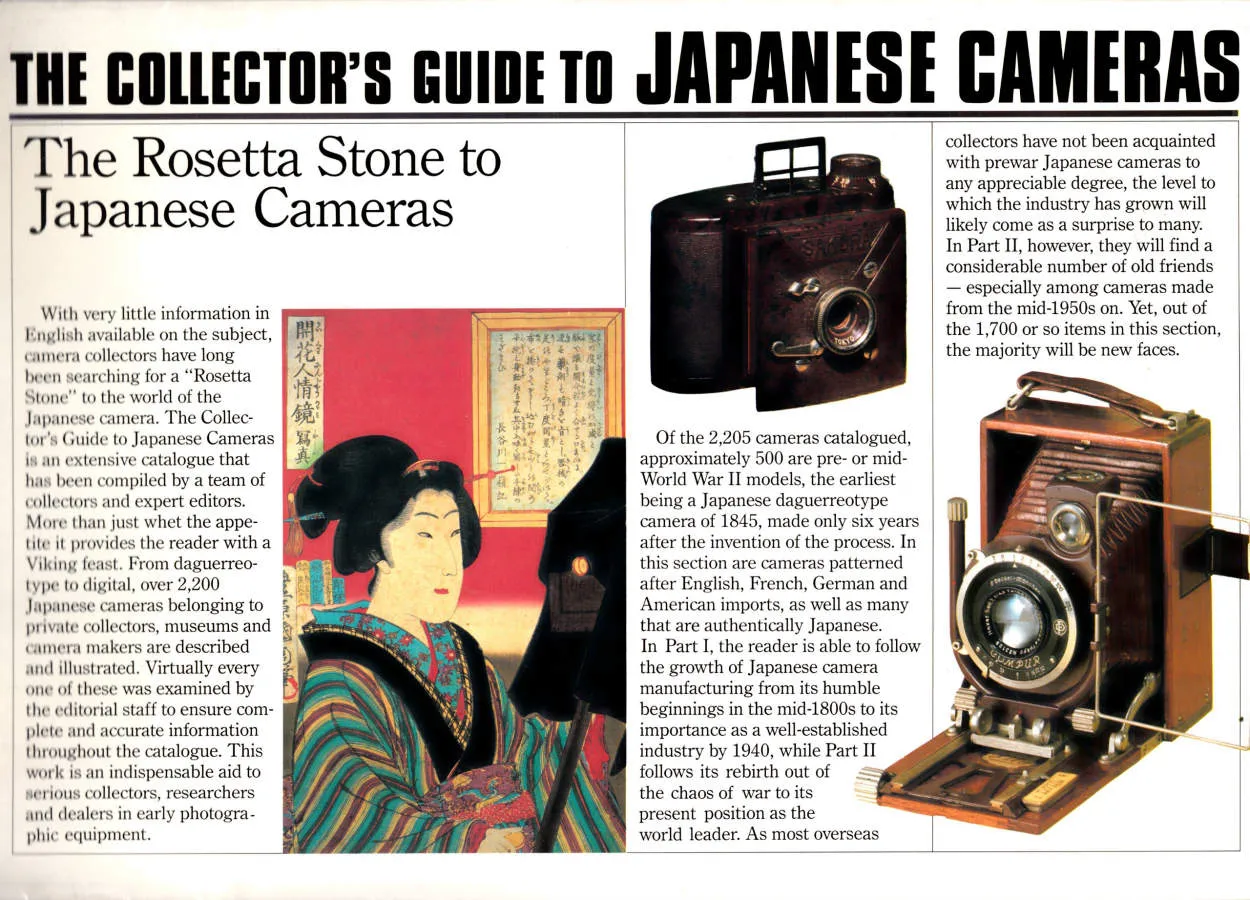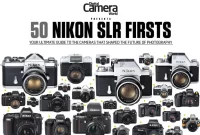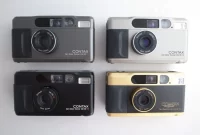Vintage Japanese Cameras: A Collector’s Guide takes you on a fascinating journey through the world of classic Japanese cameras. From iconic brands like Canon and Nikon to lesser-known gems, this article explores the rich history and intricacies of these collectible treasures. Discover the craftsmanship, innovation, and artistry behind these vintage cameras and get insights on building your own prized collection.
Exploring the History of Japanese Camera Manufacturing
The rich history of Japanese camera manufacturing has played a significant role in shaping the photography industry. From pioneering innovations to iconic designs, Japanese cameras have long been revered by collectors and photography enthusiasts alike.
It all began in the early 20th century when companies like Canon, Nikon, and Fujifilm started producing cameras that rivalled their European counterparts. These Japanese manufacturers quickly gained recognition for their craftsmanship, technical prowess, and commitment to innovation.
One key milestone in the history of Japanese camera manufacturing was the introduction of the 35mm format. In 1934, Leica’s patents on the 35mm format expired, allowing Japanese manufacturers to develop their own cameras using this format. This breakthrough led to the production of compact, lightweight, and more affordable cameras that revolutionized photography.
During the post-war period, Japanese camera manufacturers further solidified their dominance. As the country recovered from the war, companies like Nikon and Canon emerged as global leaders, introducing groundbreaking technologies such as autofocus and multi-lens reflex systems.
Japanese camera manufacturers also played a pivotal role in the rise of film photography. Brands like Konica, Yashica, and Pentax produced a wide range of film cameras that catered to different photography styles and budgets. Their cameras became sought-after collectibles, known for their reliability and precision.
Today, while digital photography has taken over, the legacy of Japanese camera manufacturing continues. Companies like Canon and Nikon remain at the forefront of the industry, constantly pushing boundaries with their cutting-edge cameras and lenses.
For photography enthusiasts and collectors, vintage Japanese cameras hold a special allure. These timeless pieces not only capture the essence of Japan’s manufacturing prowess but also serve as a reminder of the golden age of film photography.
Collecting Classic Japanese Camera Brands
When it comes to vintage photography equipment, collectors often seek out the classic Japanese camera brands. Known for their exceptional craftsmanship, these cameras not only produce high-quality images but also hold historical and cultural value. From Nikon to Canon, here are some renowned Japanese camera brands that are highly sought after by collectors:
-
Nikon:
Founded in 1917, Nikon has established itself as a leading manufacturer of cameras and lenses. Renowned for their innovation and precision, Nikon cameras such as the Nikon F series and Nikon FM2 are iconic in the world of vintage photography.
-
Canon:
Founded in 1937, Canon is another Japanese camera brand that holds a special place in the hearts of collectors. Canon’s AE-1 and Canonet QL17 G-III are highly regarded for their reliability and excellent performance.
-
Minolta:
Minolta cameras, particularly the Minolta SR-T series, have gained popularity among collectors for their exceptional build quality and advanced features. The Minolta X-700, known for its accurate metering system and versatility, is a sought-after model.
-
Pentax:
Pentax cameras, such as the Pentax Spotmatic and Pentax LX, are known for their ruggedness and durability. These cameras offer excellent optics and precise control, making them highly valued by collectors.
Collecting vintage Japanese cameras provides enthusiasts with an opportunity to own a piece of photographic history. From the iconic Nikon to the reliable Canon and innovative Minolta and Pentax, these classic Japanese camera brands continue to captivate collectors worldwide.
Identifying and Evaluating Vintage Camera Models
When it comes to vintage Japanese cameras, collectors need to have a keen eye for identifying and evaluating the different models available in the market. This guide aims to provide valuable insight into understanding the nuances of these classic cameras.
1. Researching Camera Brands
The first step in identifying vintage camera models is to research different Japanese camera brands. Some renowned brands include Nikon, Canon, Fujifilm, and Olympus. Learn about the history and reputation of each brand to assess their desirability among collectors.
2. Understanding Camera Types
Next, familiarize yourself with the various types of vintage cameras. This might include rangefinders, twin-lens reflex (TLR) cameras, SLRs (single-lens reflex), or medium-format cameras. Each type has its own unique features and appeal, so it’s essential to grasp the differences.
3. Evaluating Camera Condition
When buying vintage cameras, it’s crucial to evaluate their condition. Check for any signs of wear and tear, such as scratches or dents. Test the shutter, focus ring, and other moving parts to ensure they are in proper working order. Additionally, look out for original accessories or rare modifications, as they can significantly increase a camera’s value.
4. Researching Camera Models
Within each brand and type, there are specific models that hold greater collectible value. Conduct thorough research on these camera models. Pay attention to factors such as limited editions, unique features, or associations with famous photographers. This information will help you make more informed purchasing decisions.
5. Connecting with Expert Communities
For novice collectors, joining online forums or photography communities dedicated to vintage cameras can be highly beneficial. Engaging with experts in the field can expand your knowledge and allow you to discuss and share your findings. These communities often offer valuable advice and can help you spot counterfeit models.
6. Consider Investment Value
While collecting vintage cameras can be a hobby, it’s worth considering their potential investment value. Some models appreciate over time, making them not only nostalgic items but also smart investments. Understanding the market trends and consulting with professionals can guide you in making wise investment choices.
Remember, identifying and evaluating vintage camera models require patience, research, and attention to detail. By following these steps and continuously building your knowledge, you will become a knowledgeable collector in no time.
Preserving and Maintaining Vintage Cameras
When it comes to vintage Japanese cameras, collectors understand the importance of preserving and maintaining these valuable collectibles. Proper care ensures their longevity and enhances their value. Here are some essential tips for preserving and maintaining vintage cameras:
1. Handling with Care
Always handle vintage cameras with clean hands and avoid touching the delicate lens or any parts unnecessarily. Use a soft, lint-free cloth to wipe off any dust or dirt gently.
2. Storage
Store vintage cameras in a cool, dry place away from direct sunlight and extreme temperatures. Consider storing them in a padded camera bag or protective case to prevent scratches and potential damage.
3. Regular Cleaning
Clean the camera body and lens regularly to maintain their optimal condition. Use a camera-specific cleaning solution and a microfiber cloth to gently remove any dust or fingerprints. Avoid using harsh chemicals that may damage the camera’s exterior or lens coating.
4. Lubrication
If you notice any stiffness or resistance while operating the camera’s moving parts, such as knobs or dials, consider seeking professional assistance for cleaning and lubrication. Proper lubrication ensures smooth functioning and prevents wear and tear.
5. Battery Care
If your vintage camera requires batteries, remove them when not in use to avoid potential leaks that may damage the internals. Check the battery compartment regularly for any signs of corrosion and clean it if necessary.
6. Seeking Professional Help
If you’re unsure about any repairs or maintenance tasks, it’s advisable to consult a professional camera technician who specializes in vintage cameras. They can provide expert advice and ensure that any necessary repairs are carried out properly.
Preserving and maintaining vintage Japanese cameras is essential to protect their historical value and functionality. By following these tips, collectors can continue to appreciate the beauty and craftsmanship of these remarkable cameras for years to come.
Conclusion
Collecting vintage Japanese cameras can be a rewarding hobby for photography enthusiasts. These cameras not only hold historical value but also allow users to experience the craftsmanship and unique features of older technology. Whether you’re interested in the iconic designs of brands like Nikon, Canon, or Minolta, or the functionality of rangefinders or SLRs, there is a wide range of options for collectors to explore. With careful research and preservation, these cameras can be cherished for generations to come.




